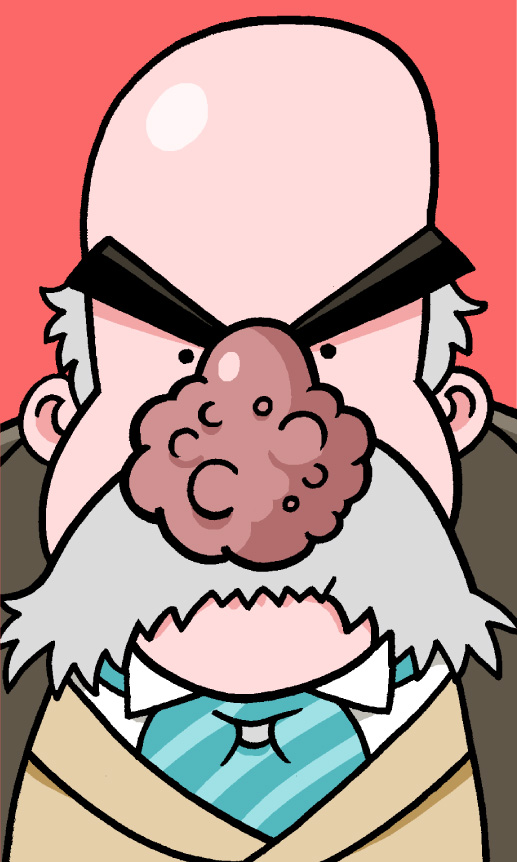Did J P Morgan Donate to Metropolitan Museum of Art

J.P. Morgan suffered from the skin condition Rhinophyma, which gave him a quite grossly disfigured, bloated olfactory organ. He was fond of expensive clothing, and put a lot of endeavour into looking stylish and elegant.
Why is J.P. Morgan famous?
J.P. Morgan was one of the most powerful and well-known businessmen of America's and so-called "Gilded Age," the mid-19th century menstruation when the country'due south apace-growing economy was dominated by a handful of ultra-wealthy industrialists dubbed the "Robber Barons." Properly speaking, Morgan was not an industrialist himself, however, merely rather afinancier — a sort of banker who helped fund big corporations past providing them with massive cash investments.
When did J.P. Morgan live?
John Pierpont Morgan was born April 17, 1837 in Hartford, Connecticut. He died of onetime age at historic period 75 on March 31, 1913, while on vacation in Rome. He is buried in Hartford.
What did J.P. Morgan do?
Built-in into a wealthy family, J.P. was educated in elite schools in Europe and America earlier joining his male parent's banking house equally a immature homo. In 1871, he broke from the family business concern to form his ain investment visitor,J.P. Morgan and & Co. The company specialized in a technique that was later dubbed "Morganizing" — investing money into struggling corporations in exchange for structural reforms that gave Morgan sweeping managerial powers (and a hefty cut of any future profits).
Throughout the tardily 19th century, J.P. "Morganized" a vast assortment of American businesses in this fashion, bringing dozens of the country'due south nigh lucrative businesses — and eventually, unabridged industries — under his control. Morgan was the principal investor ofThomas Edison'due southGeneral ElectricCompany (1887), and a founding partner of numerous mega corporations includingU.South. Steel(1901), which combined several different steel firms into one multi-billion dollar corporation, theNorthern Securities Company (1901), which owned America's three biggest railroad companies and controlled near one-half the state's railway lines, and International Harvester (1902), which merged America'southward largest farming machine firms. This ane-human being consolidation of and so much corporate ability made the U.S. government increasingly uncomfortable, however, and in 1902, the crusading administration of President Teddy Roosevelt (1858-1919) forcibly separate up Morgan's railway holdings in his assistants's first successful attempt at "trust busting," or breaking up attempted monopolies.
Though many Americans resented Morgan'southward massive personal wealth, he was besides occasionally lauded equally a hero, notably during the and so-chosen economic "Panics" of 1893 and 1907. On both occasions, Morgan was summoned by the White House to single-handedly save the United States from low; in the offset case by purchasing large amounts of gold to replenish the dwindling supply of the U.S. Treasury, in the other by leading an effort among the land's top financiers to pump money into failing American banks. His actions would later help inspire the cosmos of theUnited States Federal Reserve, a government body with the power to increment the American money supply in times of crisis.
What was J.P. Morgan like?
JP Morgan was a gruff, stern human being whose ruthless tactics in business and dear of expensive luxuries fulfilled many stereotypes of Gilded Age multimillionaires. His wealth and fame besides allowed him to be easily caricatured however, and historians who take studied Morgan often caution against the simplistic over-generalization that the homo once dubbed "the Napoleon of Wall Street" was niggling more than than a heartless, money-grubbing plutocrat.
Morgan was undeniably pushy, and enjoyed using his wealth and physicality to intimidate others. He was stubborn and unyielding in demanding what he wanted — be information technology from the lowliest servant or the President of the U.s. — and could be a harsh and fierce boss. Not specially addicted of delegating responsibility to others, Morgan often personally micromanaged his companies down to the smallest detail, only this obsessive passion came at a cost, and Morgan routinely experienced long bouts of burnout and depression. Despite his general irritability, he did make friends easily and led an active social life, hosting many high-club parties and pursuing many glamorous mistresses whom he made little effort to hibernate.
Worldly and educated, Morgan had a vast array of hobbies and interests beyond the earth of high finance, and strove to be a cultured and urbane gentleman. In addition to stereotypical upper-class luxury goods like mansions, yachts, cigars, and jewelry, he was fond of travel, literature, and strange languages. Like many millionaires of his time, he became increasingly charitable as he aged, and by the end of his life had spent more than half his enormous fortune on a passion project to assemble the earth'southward largest private collection of art, which, upon his decease was donated to theMetropolitan Museum of Art in New York Urban center.
More than information about J.P. Morgan

The Morgan Library & Museum, Manhattan, New York.

"Visitor History." J.P. Morgan.com.

Chernow, Ron. The House of Morgan: An American Banking Dynasty and the Ascension of Modern Finance. New York: Grove Press, 1990.
Morris, Charles R.The Tycoons: How Andrew Carnegie, John D. Rockefeller, Jay Gould, and J. P. Morgan Invented the American Supereconomy. New York: Owl Books, 2005.
Strouse, Jean. Morgan: American Financier. New York: Random Firm, 1999.

Lopez, Linette. "Why You Would've Been Obsessed With JP Morgan The Man In One Giant Slide." Business Insider, October 19, 2013.
Source: https://americansthatmatter.com/j-p-morgan/
0 Response to "Did J P Morgan Donate to Metropolitan Museum of Art"
Post a Comment